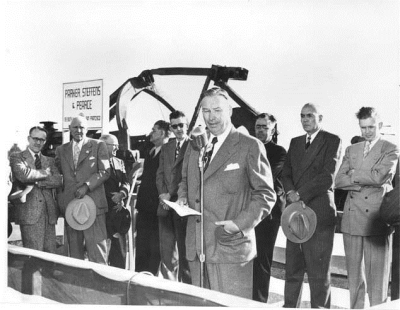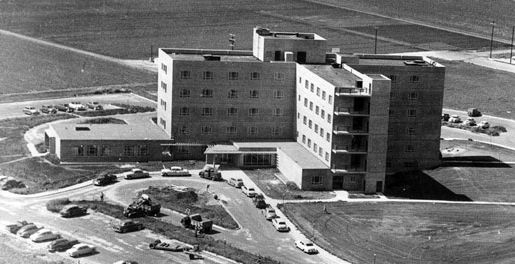History
 Salinas Valley Health Medical Center (formerly Salinas Valley Memorial
Hospital) opened on April 20, 1953, with 100 employees, 45 physicians
and 138-beds. The modern facility offered medical and surgical patient
floors, pathology and radiology labs, operating rooms, a fracture room,
a physical therapy unit, and a pediatric unit with a nursery and a "pacing
room" for fathers-to-be.
Salinas Valley Health Medical Center (formerly Salinas Valley Memorial
Hospital) opened on April 20, 1953, with 100 employees, 45 physicians
and 138-beds. The modern facility offered medical and surgical patient
floors, pathology and radiology labs, operating rooms, a fracture room,
a physical therapy unit, and a pediatric unit with a nursery and a "pacing
room" for fathers-to-be.
The planning and fundraising efforts, however, started much earlier-around 1941, when the Salinas Community Hospital Association was formed. Bruce Church, a successful local businessman, called on other influential citizens including Franklin Cornell, James J. King, T.R. Merrill and Oscar Daley to lead more than 175 civic leaders in a major fundraising effort. Church donated the land for the medical center's Romie Lane site and nearly $300,000 was raised. The campaign was put on hold with the onset of WW II, but it resumed fervently in 1947. That same year, the California State Legislature passed an act allowing communities to establish taxation districts to build medical centers and area voters approved the Salinas Valley Memorial Hospital District. Church was elected president of the District's Board of Directors.
On the day of the dedication, March 29, 1953, President Dwight D. Eisenhower sent a letter of congratulations to Bruce Church. In it he said, the "People of Salinas Valley have every right to be proud of this admirable example of local self-reliance and initiative," commenting on the fact that no state or federal funds were used.
Founders and early administrators envisioned a medical center equipped with the latest technology that offered citizens the opportunity to receive high-quality health care without traveling out of the area. Their vision inspired future administrators.
The medical center's first quarter-century was marked by significant advancements in technology. The next 25 years would usher in a level of technology that would have been difficult to imagine, even for the most forward-thinking individuals. Through strong leadership, fiscal responsibility, strategic planning and a driving commitment to the highest quality patient care, the medical center began its transformation into the comprehensive, integrated health care system that it is today.



